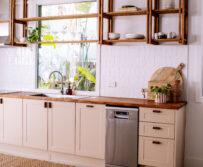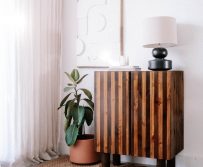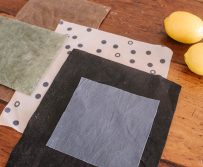This is going to sound a little extreme, but I seriously believe that rugs have a transformative effect on a space. Which is why I’m excited to share a guide to rug types, those different ones that I love having in my space!
I actually recently moved a rug for a shoot from our living room, and was absolutely shocked at how bare it was – felt more like a cell than a home, so hard and echo-y. It’s difficult to imagine there was a time I hardly gave them a second thought but now I can’t quite imagine my home or studio without one or two (or twenty). But when it comes to buying them, it’s definitely been a case of trial, error and a wholllllle lot of research. Because of the relative cost of a rug, it pays to learn as much as you can before taking the leap – and trust me, I’ve spent a scary number of hours scouring Etsy and googling rug regions in Afghanistan… All to get the best rugs, and bring you this! A simple guide to my favourite rug types.
A Guide To Rug Types
Turkish
Traditional Turkish rugs (or carpets) are a type of oriental rug which are hand-made by artisans using a double loop knot. Made from fibres such as wool and silk, Turkish rugs are woven with a low pile in a wide array of styles defined which Turkish city they originate from. Bergama rugs are heavily tribal influenced, Hereke rugs feature elegant curve-linear patterns whilst the renown Oushak rugs are revered for their soft pastel colours. Turkish rugs were originally used as flooring in nomadic tents so are strong, durable and a great temperature controller in a living space. They are similar in appearance to Persian rugs although constructed differently as we’ll mention later.
Search for: Oushak, Giordes, Hereke, Sivas, Bergama.
Natural
As the name suggests, these rugs are made out of strong, vegetable fibres such as jute, sisal, seagrass, bamboo or coir. They are also flat-woven but unlike Kilims, due to the nature of the fibre, rugs produced from natural fibres are extremely durable and versatile, ideal for high traffic areas (like in our studio meeting area). Natural fibre rugs are a great alternative to rugs made of wool and cotton and are used to bring a casual look and feel to a room. They can be woven into a range of different shapes from rectangular to circular patterns (like this rope rug we made a little while ago here).
Search for: Jute, Sisal, Coir, Bamboo, Seagrass.
Kilim
Kilims are flat-woven tapestry rugs originally from Turkey but can also refer to similarly woven rugs from Scandanavia, Persia and Morocco, each with their own distinct designs. They are most commonly made of wool but can also be made from hemp and cotton fibres. They can be woven in a wide range of motifs which make them popular choices to add pattern and colour to interiors. However because of the nature of the flat weave, kilims are much less durable rugs than those with a pile which provides protection to the flat-woven base.
Search for: Turkish Kilims, Scandinavian Kilims, Persian Kilims, Moroccan Kilims.
Persian
Persian rugs are a type of oriental rug made in Iran using a single looping knot. They are the leaders in oriental rugs from the elaborate and stately Sultanabad carpets to the geometric and abstract tribal carpets of Heriz. They are most commonly made of wool although they can also be made of silk which is extremely precious and long-lasting. Combined with the low pile of their weave, Persian rugs are durable and strong making the vintage rug variety highly sort after.
Search for: Kerman, Saltanabad, Afshar, Isfahan, Heriz, Khorassan.
Beni Ourain
Beni Ourains are made with a high, thick pile from wool and are dichromatic, usually white with black bold geometric patterns. The soft neutral colours of the rug make it popular for large, bright minimalist interiors. However, keep in mind that the light colour of the rug also make dirt and scuff marks easily visible so it’s best to avoid placing the rug in areas of high traffic or with children or pets.
Search for: Pile Knot, Morrocan Rug, Natural Wool Moroccan Rug, Black and White Moroccan Rug, Soft Pile, Berber Rug.
Boucherouite
Another style of Moroccan rug, Boucherouite rugs are hand-loomed, often made out of clothing fabric scraps which gives them a tufted feel and are often made with many bright colours. They are made by village women in remote Moroccan Berber tribes around the Morocco Atlas mountains villages. Highly textured hooked rag rugs like this can look beautiful but are tricky to clean so aren’t the best choice for high traffic areas or if you have pets or children.
Search for: Azilal Rug, Moroccan Rag Rug, Hooked rag rug.
While the above list is definitely not extensive, hopefully it’ has given you a good overview of the types of rugs that you will find in stores, online, but more importantly, floating around on Pinterest and every drool worthy interior designer’s website.
Rug Terminology
Once you start researching about rugs you learn a whole new language (practically), so we thought we would give you a quick rundown of the terms we’ve noticed being used the most. There’s a lot more to learn but this is a start!
Antique – If the quality is good, an older rug is generally more valuable than a newer one due to the way that the rugs have historically been produced. Antique is often not that easy to define, sometime sit means more than 50 years and other times it means more than 100 years old. Unless you specifically want an antique, I personally think that rather than focusing on the age, it’s good to mainly understand whether an item has been handmade or commercially made, as this will be the biggest difference.
Yarn – This is the strand of fibers used for creating the rug.
Pile – This is yarns that are looped to a flat-woven base and stand upright giving the rug a fluffy look and feel. Piles can be looped, cut, high or low. It’s also good to note that although the price of rugs will vary greatly depending on the size you buy, generally speaking rugs with pile weaves and oriental or vintage origins will be more costly than their flat woven, commercially produced counterparts.
Overdyed – This is a technique traditionally performed on vintage handwoven wool carpets and creating this look involves a process of bleaching, dyeing and washing which produces a carpet that’s richly saturated in color and you can still see the original pattern peeking through.
Knotted – This is usually high-quality handmade woven rug made by tying each individual yarn tuft to the warp strand. Knot count means number of knots per square inch.
Flatwoven – Rugs with the yarn woven through and along the warps.
Stay tuned for a list of our favourite places to splurge (and save!) on rugs and a few other buying tips!
If you love rugs, why not make your own out of rope using this DIY round rope rug tutorial.
Rug Images via Semikah Textiles and Loom and Field.















